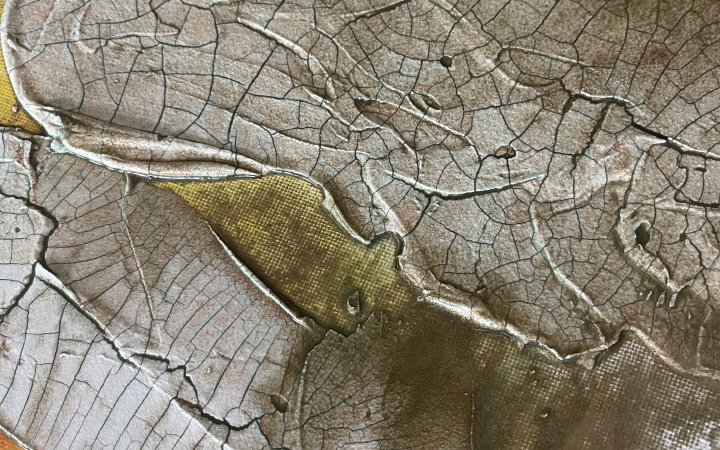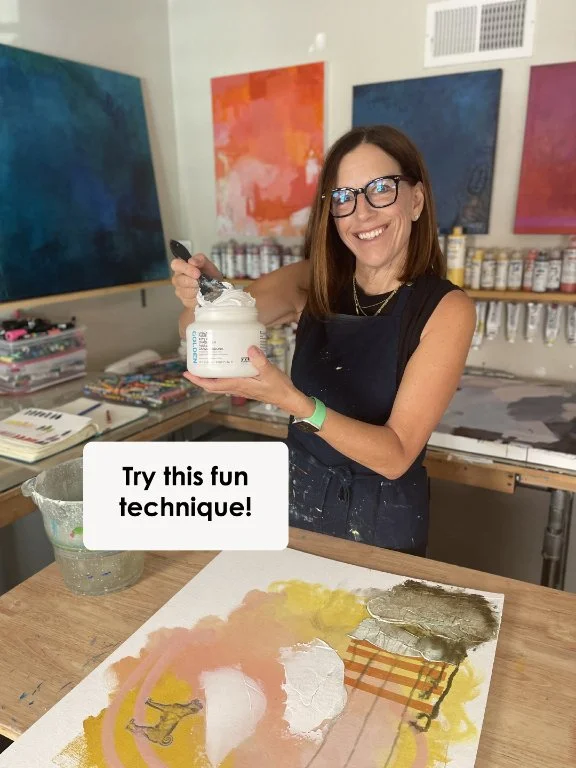Give this a try! Free Video
I think if I were to take all of my acrylic mediums and put them in a pile, one medium specifically would have a bad rap: Crackle Paste. How did this happen?
Back in the day, when I was just starting to experiment with acrylic paint, we we're buying up every mixed media supply we could get our hands on. All the ink pads, all the special effect items we found, everything. Crackle paste was released by a popular company that used to dominate the craft aisles and we bought those all up too. Every color.
Back then, I had never tried anything from Golden (we are talking early days.. 2006..everything was bought at a chain craft supply store). We would take our loot of the day home and quickly try to make things we saw on the internet chat boards. Sometimes things worked, a lot of times they didn’t. We were learning. Growing. Experimenting.
The crackle paste of years ago would dry without producing any cracks. It would dry, crack and flake off..sometimes, it would reactivate when water media crossed it’s path. It was a sad state of affairs.
Fast forward to 2022 and within the last 3-5 years, I have used crackle paste a handful of times in my online workshops or while teaching. The other day, I decided to take it out and play again.
I was totally happy with the results. Here are a handful of tips that you need to keep in mind when you are working with crackle paste:
Time. You need a lot of time with this. The packing for Golden Crackle Paste states that you need to allow the paste 3 or more days to fully dry. I started to panic when I checked on my paste, but was delighted to see that cracks continued to develop after the paste felt touch dry.
Do not try to speed the drying time. Trust me on this… I feel like this was the number one reason we were all disappointed with crackle paste back in 2006. No heat gun, partner.
If you spread it thin, you’ll get tiny cracks, a lot of them. However, spreading this as thick as you would if you were putting cream cheese on a bagel at the picnic and you’ll get deep, luscious, unique shapes. (The image above is thickly dried crackle paste.)
Apply crackle paste on top of acrylic paint that has fully dried.
Try coloring the paste and then spreading it or paint it after you wait a few days.
I made a short video on Instagram about my process. (Instagram won’t let me link it here. Follow this link to my reels to see it.)
My favorite thing to use the crackle paste for is an aged effect in my abstract paintings. How cool would this be if you were painting the desert floor? When the paste is dry, I like to thoroughly wet it with water and float Iridescent Bronze acrylic paint over it. The patina is gorgeous!
Let me know how you would use this medium in the comments below! Extra credit if you were also messing around with every supply in the craft store back in 2006..where my rubber stamping pals at? 🙌

